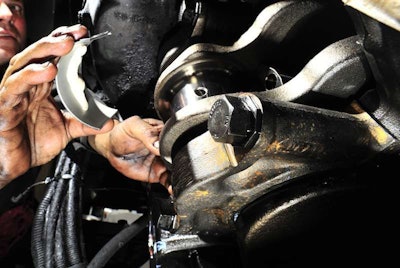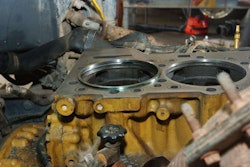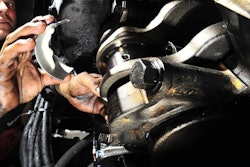 Learning how to take care of certain maintenance items without the help of a shop is paramount to an owner-operator’s success.
Learning how to take care of certain maintenance items without the help of a shop is paramount to an owner-operator’s success.After working with owner-operators for the last 37 years, I’ve concluded there are at least nine items that struggling owner-ops usually are missing:
Turbo boost gauge: Driving without a turbo boost or manifold pressure gauge is like driving blind. The boost gauge will inform you when you have a leak in the charge air system, a failing turbo, clogged fuel lines, a faulty ECM, dirty air filter(s), a dirty fuel filter or are using too much throttle on the level, resulting in a fuel mileage loss.
Exhaust gas temperature gauge (or pyrometer): This gauge works in conjunction with the turbo boost gauge and will inform you if the exhaust gas temperature is too high or if there is a boost leak. If you’re lugging the engine, the fuel filter is dirty or there is a power problem, you’ll need to know the differences in the boost and pyrometer gauges.
Kevin Rutherford’s Scan Gauge: This gauge will give you an instant readout of your fuel mileage and about 63 other useful bits of information from your truck’s data link.
Fresh fuel filters: Many owner-operators are not changing their fuel filter soon enough. We get many trucks in for dyno testing for low power complaints and find dirty fuel filters. Back in the 1980s, we used to change the fuel filter once a week. Now, it’s at oil change intervals, and 30,000 miles is way too long to run a fuel filter.

New crankshaft torsional vibration damper: This part is located on the front of the crankshaft and removes torsional vibration from the engine. They absolutely do wear out, regardless of what your mechanic has to say, and must be replaced every 500,000 miles.
Usually, mechanics don’t change them, and that is wrong. This is a wear item just like a tire and must be replaced. It has a large steel ring that rides on a Teflon bearing and floats in a thin layer of silicone. At about 380,000 miles, the Teflon bearing starts to wear, and that impregnates the silicone. At 500,000, the silicon has gotten hard, and the steel ring won’t be able to “float” and absorb the torsional vibration.
Engine parts likely to break because of this include the AC condenser brackets, alternator brackets, flywheel bolts, bell housing bolts, accessory driveshafts, air compressor crankshafts, engine crankshafts, transmission input shafts and clutch disc springs. Need I say more?
Rebuilt driveshaft: Driveshafts should be rebuilt every 500,000 miles, especially if the truck is in a heavy-haul application or spends time in the mountains. Driveshafts bend, carrier bearings wear out, and U-joints get out of balance.
Cruise control awareness: Driving with cruise control on all the time will rob the engine of at least ½ mpg when in rolling hills or mountains. Use your right foot and drive by the turbo boost gauge – the less boost you can get the job done with, the better your fuel mileage – and pre-accelerate for hills. Cruise should be used only in level terrain.
Aftermarket muffler: Stock mufflers are more restrictive than aftermarket ones, and you can rob yourself of at least ¼ mpg by not installing a straight-through performance muffler.
Mechanical skills: I hear this sentiment often: I just want to drive the truck and don’t want to do maintenance in my off time.
Labor rates are high today, and you can cost yourself thousands of dollars a year by not keeping up with some of your own maintenance. One pleasure of vehicle ownership is performing simple routine maintenance. Repairing items as they fail or before they fail, cleaning the truck, changing the oil, greasing the chassis, changing the fuel filter and spending time looking for potential problems go hand-in-hand with ownership.
These are all simple steps you can do at home, and a little sweat equity will make you feel better about your truck and probably prevent a long list of problems.
-Bruce Mallinson is the owner of Pittsburgh Power, an engine performance shop in Saxonburg, Pa.









